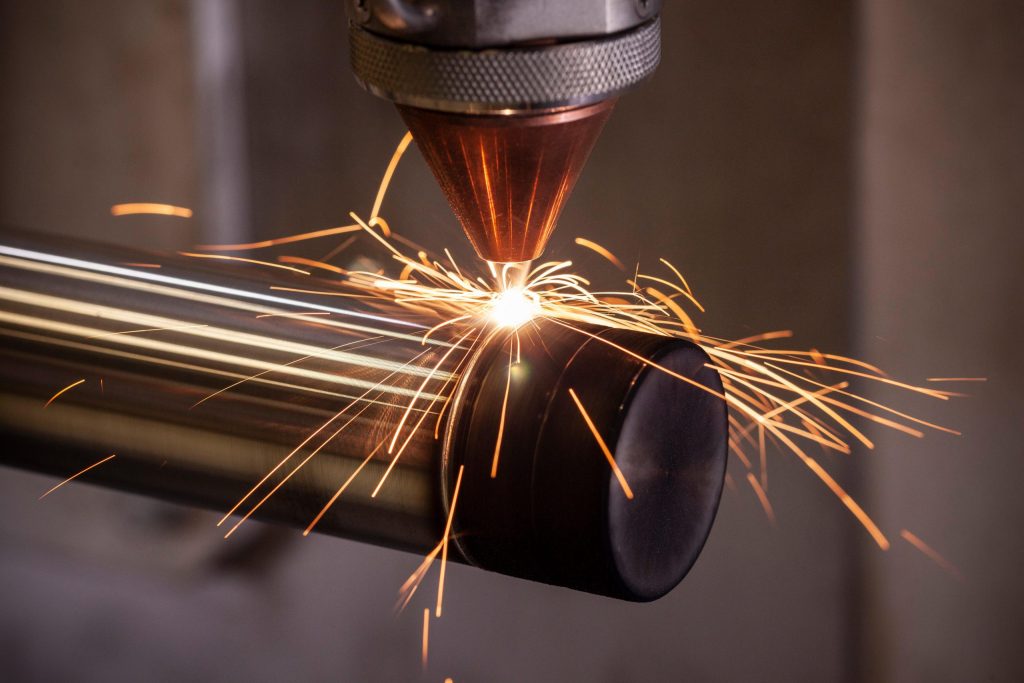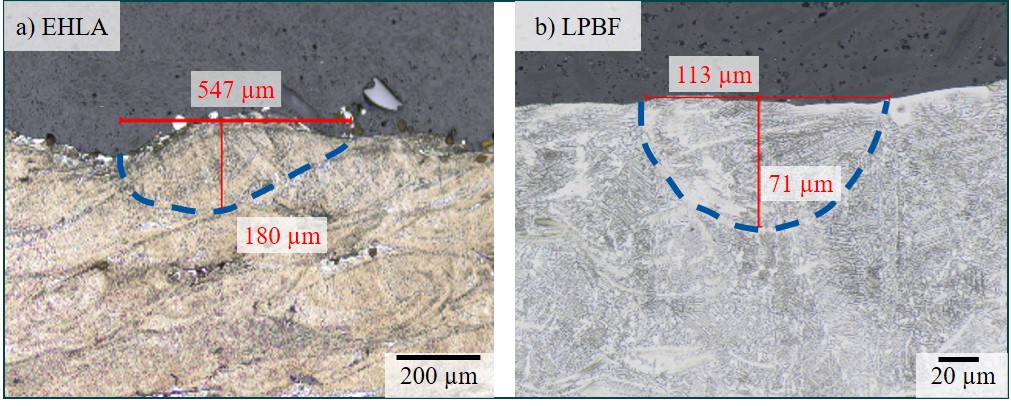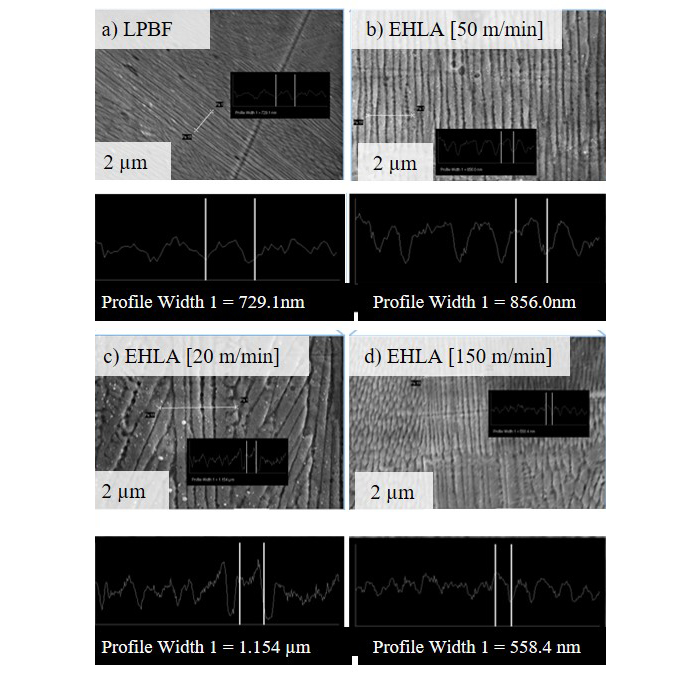3D Printing Industry is currently seeking feedback on resin 3D printing. Send your insights now and take the Spotlight on Resin 3D Printing Survey.
Researchers from RWTH Aachen University’s Chair for Digital Additive Production (DAP) have started using Extreme High-Speed Laser Material Deposition (EHLA) 3D printing technology to develop new alloys for laser powder bed fusion (PBF).
Originally developed in 2017, EHLA is Fraunhofer ILT’s take on high-volume directed energy deposition, or DED. The additive manufacturing technology was intended as a method for coating and repairing metal parts, and has the potential to replace current corrosion and wear protection methods such as hard chrome plating and thermal spraying.
The RWTH investigation involved comparing the two printing technologies’ process characteristics, which yielded promising results with regards to the transferability of their material capabilities. In essence, the DAP team believes it can qualify EHLA as a rapid alloy development platform for PBF 3D printing.

EHLA as an alloy development platform for PBF
PBF is one of the more widely-used additive manufacturing technologies in critical industries, enabling users to 3D print high-strength metal parts with optimized geometries. A significant advantage of PBF is its ability to process alloys that conventional manufacturing techniques struggle with, but the DAP team affirms that this potential hasn’t yet been leveraged due to the difficulty of the alloy development process. Creating alloys that make the most of LBF process characteristics such as high cooling rates is both time and resource-intensive.
EHLA, with process qualities such as in-situ single powder supply and PBF-like cooling rates, features the correct prerequisites to make it a great alloy validation platform for PBF, all in a rapid and resource-efficient manner.

Comparing the two 3D printing processes
To start off, the DAP researchers first identified the relevant EHLA and PBF process parameters that affected cooling rate, which in turn influences the microstructure and mechanical properties of printed parts. The findings were used to 3D print sample parts made of high manganese steel (X30Mn22). Finally, the samples’ microstructural properties resulting from both PBF and EHLA were compared to confirm the team’s assumptions regarding EHLA’s suitability for alloy development.
Since the intensity of the laser energy source has a major effect on cooling rate, this parameter was calculated and compared for both 3D printing processes. The team found that the intensity in PBF is almost 14 times higher than in EHLA, but the interaction time between material and laser beam is about ten times higher in EHLA so the effects cancel out and lead to similar energy inputs.
Additionally, the team determined the effects of EHLA’s process speed on the cooling rate by measuring and comparing the dendrite arm spacings (DAS) in both sets of printed samples. Increasing the EHLA process speed reduced the DAS, indicating that the process speed also has a significant effect on the cooling rate.
Another metric to investigate the processes’ transferability was the energy volume density, which showed that both 3D printing technologies had similar heat balances.
All in all, the DAP researchers found that the microstructures in both sets of printed samples were similar and could be further homogenized by tinkering with process parameters such as EHLA’s process speed. As such, they came to the conclusion that the resulting microstructures and mechanical properties are comparable for EHLA and PBF, making the former a suitable alloy screening and development tool for the latter.
As far as future work goes, the team aims to compare the chemical compositions of the printed sample sets and examine additional process parameters such as particle velocity and powder mass flow. In addition, due to the difference in energy input between the technologies, the evaporation behavior of various alloys will also be investigated and compared.

Alloy development is an ongoing area of active research in the additive manufacturing community. Just recently, a team of researchers led by the City University of Hong Kong used 3D printing to design a new titanium-based alloy that’s ‘super-strong, highly ductile, and super-light’. The scientists believe their work could pave the way for a new materials development paradigm, whereby 3D printing technology is used to create alloys with structures and properties suitable for industrial applications.
CSIRO, Australia’s national science agency, also developed a novel process to transform inexpensive alloy waste into high-value titanium wire for 3D printing. The CSIRO team is reportedly the first in Australia to produce titanium wire in this way, the product of which can be used to make 3D printed parts such as aerospace components.
Subscribe to the 3D Printing Industry newsletter for the latest news in additive manufacturing. You can also stay connected by following us on Twitter, liking us on Facebook, and tuning into the 3D Printing Industry YouTube Channel.
Looking for a career in additive manufacturing? Visit 3D Printing Jobs for a selection of roles in the industry.
Featured image shows the EHLA 3D printing process. Photo via RWTH Aachen.



